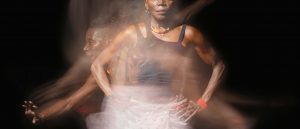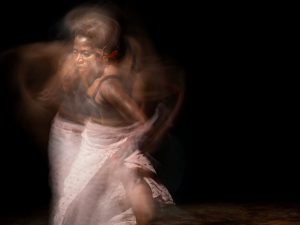

Since coming to Richmond in 2014, E. Gaynell Sherrod, Ed.D., has found endless inspiration from the city’s Trail of the Enslaved.
The walking route encompasses key sites along the 2.5-mile path that once led enslaved Africans from the docks of Manchester to the auction houses of Shockoe Bottom. The 17 markers along the way offer insight into the legacy of slavery.
“I’m a history buff,” said Sherrod, a professor of dance and choreography at the School of the Arts. “I was taken by the fraught history of Richmond and Virginia as it pertains to Africans in the Americas. And I was really taken by the Trail of the Enslaved and the multiple African burial grounds that are right around where I work every day.”
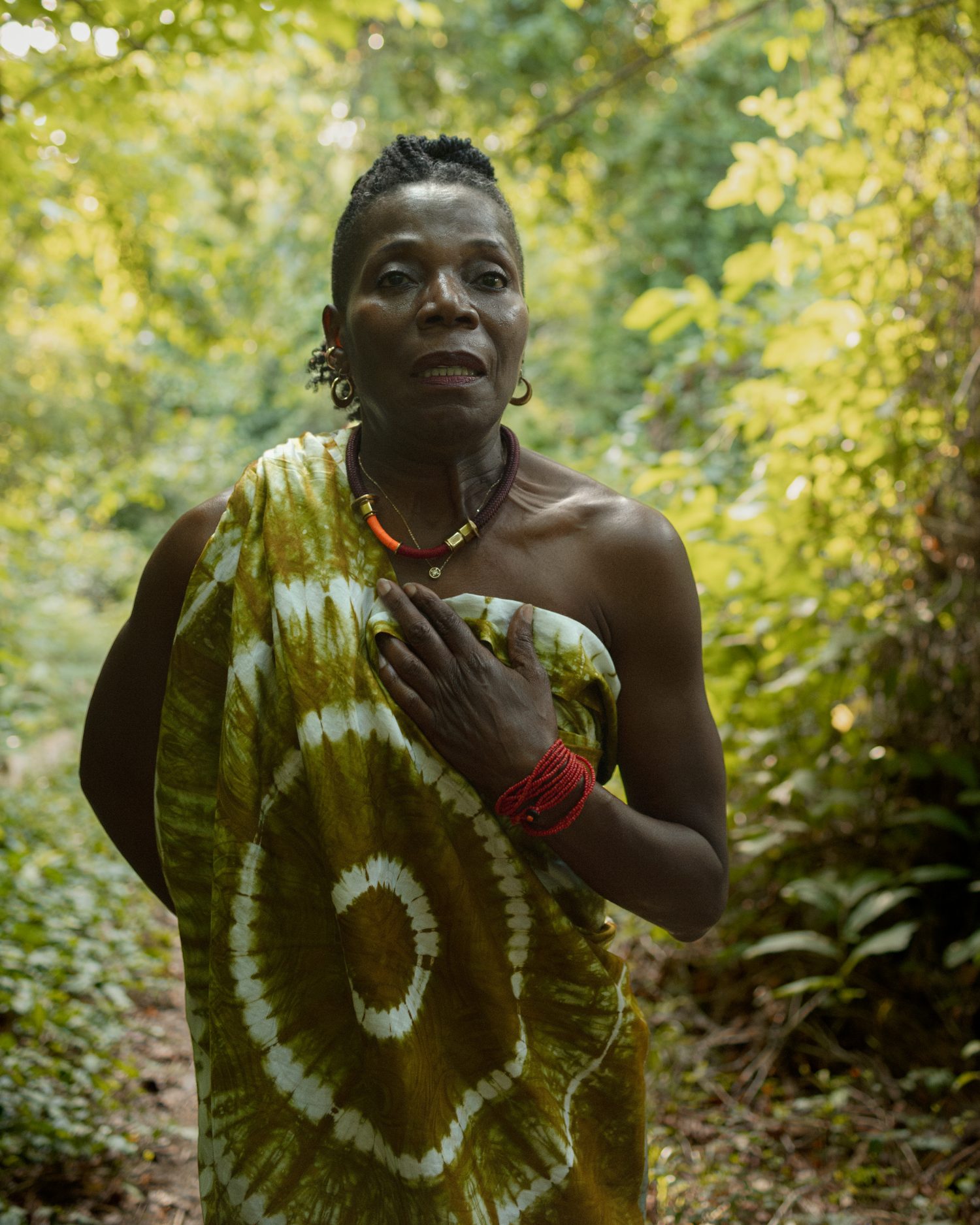
Sherrod gradually incorporated the trail into her curriculum, taking students there to dance and learn, and she regularly brings friends and colleagues there to share in the solemnity.
One of her guests was Valerie Cassel Oliver, who moved to Richmond in 2017 to become curator of modern and contemporary art at the Virginia Museum of Fine Arts (VMFA).
“It was a profound experience for me because I really felt the energy that existed in that space,” Cassel Oliver recalled. “I had never been on a trail or pathway that so movingly held and retained the history of Black people being placed into bondage—the space where they walked.”
The introduction would prove fortuitous.
Cassel Oliver, who is a close friend of renowned photographer and MacArthur “genius grant” winner Dawoud Bey, mentioned the trail to him a few months later. She considered it as a potential site for his ongoing work contemplating the experiences of enslaved African Americans through landscapes.
Bey met with Cassel Oliver and explored the trail. And Elegy was born.
Bey’s exhibition, which ran at the VMFA from Nov. 18, 2023, through Feb. 25, 2024, was presented as a trilogy, showcasing three photographic series—one of which was the VMFA-commissioned Stony the Road, based on the Richmond trail. It also included In This Here Place, set in the plantations of Louisiana, and Night Coming Tenderly, Black, which featured Ohio’s Underground Railroad.
“He felt that same energy that I felt when I first went along that trail,” Cassel Oliver said of Bey’s experience.
Richmond’s trail provided a beginning to Bey’s three-part exploration of the enslaved experience, stretching from the docks of Manchester to the plantations between Baton Rouge and New Orleans to the sites where fugitives sought to self-emancipate in the Northeast.
Comprising 42 photographs and two film installations, Elegy was curated by Cassel Oliver and featured a unique collaboration with Sherrod. Working with a team of fellow VCUarts faculty members and alumni, she contributed a moving and innovative soundtrack to the film 350,000, a companion to Stony the Road.
In chromatic hues of black and white, the film—based on the experiences of the more than 350,000 men, women and children sold from Richmond’s auction blocks at Manchester between 1830 and 1860—is a cinematic and sonic meditation on the landscape of the city trail.
When Bey expressed interest in incorporating a film element with the Richmond component of Elegy—including a soundtrack driven by movement and dance to capture the energy and disorienting effect of the trail—Cassel Oliver immediately thought of Sherrod.
“It could not have been more perfectly circular,” Cassel Oliver said. “Gaynell had introduced me to the trail. She had walked it, she knew it. She could imagine how to embody and create a sonic landscape that would beautifully accompany the visage.”
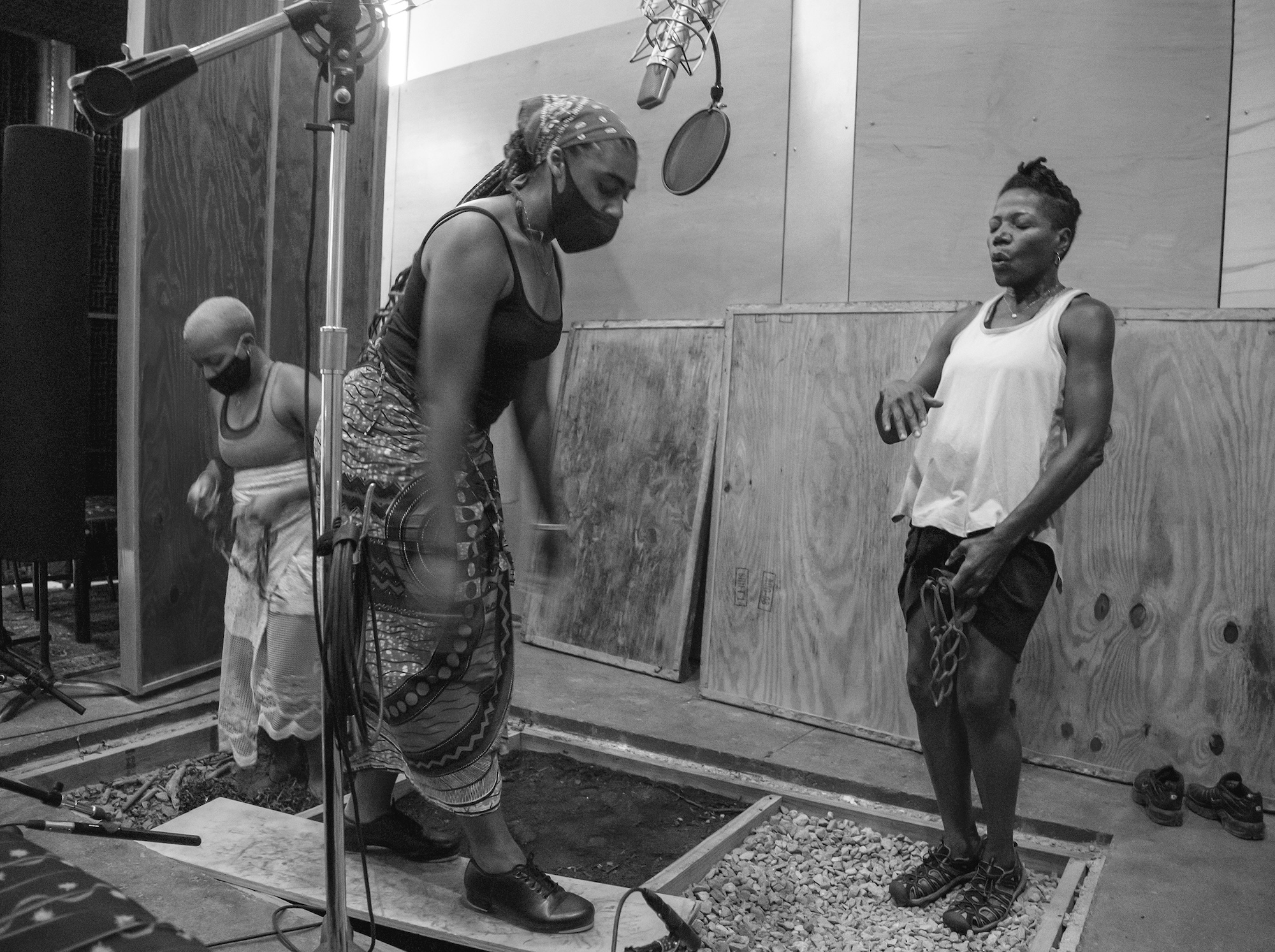
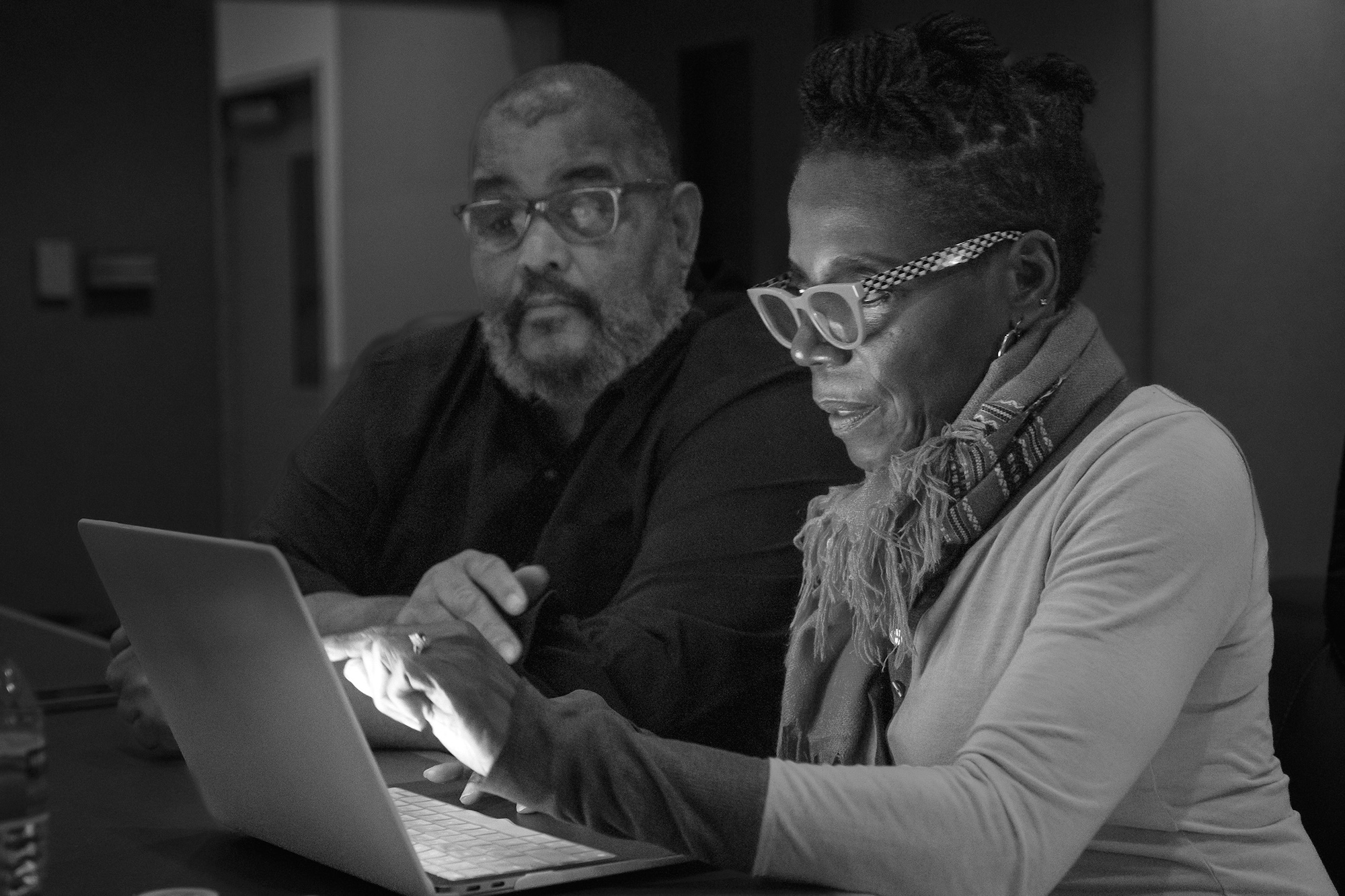
The collaboration was a novel one for Sherrod and her team of dancers: Their performance was captured as foley sound for the film’s score. The soundscape juxtaposes the haunting visual documentation of the trail with an original score produced through a process of recording choreographed movements directed by Sherrod.
The dancing weds to the film’s visuals in a manner that suggests poignant sonic atmospheres—such as within the hull of a ship in passage, and along the treacherous journey by foot from the Virginia coast to the auction block.
As the project further developed, Sherrod recalls an early conversation with Bey that gave her pause. He conveyed that he wanted to incorporate movement and dance, but he did not want the dancers to be seen. He wanted the weight of the space to tell its own story.
“I tried to back out,” Sherrod said with a laugh. “How am I going to tell these people, ‘You’re going to do this work, but you won’t be seen’? We are to be seen. Our bodies are our instruments.”
As she pondered the concept, Sherrod kept returning to her research around Ring Shout, a derivation of traditional African dance, and its emphasis on breath.
“Life depends on breath,” she said. “Breath and breathing were the key elements needed to stay alive when you were in the hull of an enslaved ship packed like a sardine. You had very little breath. And when they were unloaded at the Manchester dock, the breath and the air was what helped those folks move along that path.”
Sherrod said the creative process “began as a journey for descriptions.”
“By reading through historical texts and engaging in dialogues with specialists on the topic, I could start to accumulate a sense of a vocabulary on the acoustics of the Trans-Atlantic journey—first by sea and then by land,” she said. “I wanted to understand how the body existed in that kind of confinement: What were the sounds? What were the scents? How did one perceive the passing of the day from within the hull? The archive could only offer a portion of this history. So, much had to be discovered through the dancing.”
Sherrod recruited a team of VCUarts faculty and alumni for the project, including theater professor Tawnya Pettiford-Wates, Ph.D., and then-assistant professor of dance Sinclair Ogaga Emoghene. Dance alumni included Keola Jones, Mikayla Young, Amena Sehay Durant, Nia Reynolds and Joie Mouran.
Following their research, Sherrod facilitated exercises in improvisation with the cast in response to these found terms. The performers conducted these movement explorations in a site-responsive manner at the historic trail and within a sound studio pit.
Young described these exercises as beyond improvisational.
“We as a cast had to learn how to arrive in our bodies with a history that was incomplete—and how to represent that gap through movement as sound,” Young said. “We had to learn to call upon our imaginations in a way that offered reverence for the loss and grief of our ancestors.”
Jones recalled practicing at the historic trail on a hot and humid day.
“I wondered about how our ancestors traveled this ground that I was standing on now. How this same heat that met me in my dancing had also met them in conditions I cannot even fathom,” Jones said. “As we danced, the heat and our motions made the veil thin between what was and what is. It gave us an awareness that we had to move sensitively to honor this role.”
Sherrod progressively directed the cast from the more open forms of improvisation toward refined choreography that would later require special costuming, props and the dancer’s body, which collectively became resonant components of a foley soundscape for the film.
The tradition of foley sound emerged in early Hollywood cinema and animation, including Walt Disney’s Mickey Mouse. Practitioners would creatively engineer sound to synchronize with the narrative on screen or stage—think of a creaking door or the swish of a cape.
Composing foley sound has developed into an expansive discipline. And for 350,000, the dancers’ recorded sound tells a different yet complementary story to the film’s visual media.
No part of Bey’s work attempts a dramatic representation of enslaved Africans in passage. Instead, the film’s visuals reflect a rumination on the natural expanse of the historic trail, a constellation of frames that survey the haunted land. The soundscape of effortful, dancing bodies propels the rumination.
While some sounds produced by the dancers reflect human events in the historical record, like the heaves of bated breath amid containment, Young and Jones noted that costuming and props were key to register sounds of non-human activity. Among them: water lapping wood planks, as if heard from the interior of a ship, and the rattling chains during a march through tall grass.
Sherrod began referring to the team’s work around 350,000 as “choreo-sonic.” And she, Jones and Young noted how the creative process required a level of care and specificity, as the film touched on traditions of ritual dance, ancestral lineage, conjuring, memory and time travel. Such variables offered an exciting artistic challenge—and extracted a psychic toll.
“After the recording sessions, we had to recenter ourselves,” Sherrod said “Oftentimes, we would go into some zones, and there would be crying, there would be shaking. We would go into some transcending moments.”
Bey’s avoidance of theatrical representation allows the sonics of the dancing bodies to build on the fragmented nature of slavery’s historical archive, much as sound, stories, folklore, incomplete records and the tangible construction from slave labor collectively reflect intangible haunting. In 350,000, sonic dance imbues the unimaginable experience that remains unseen.
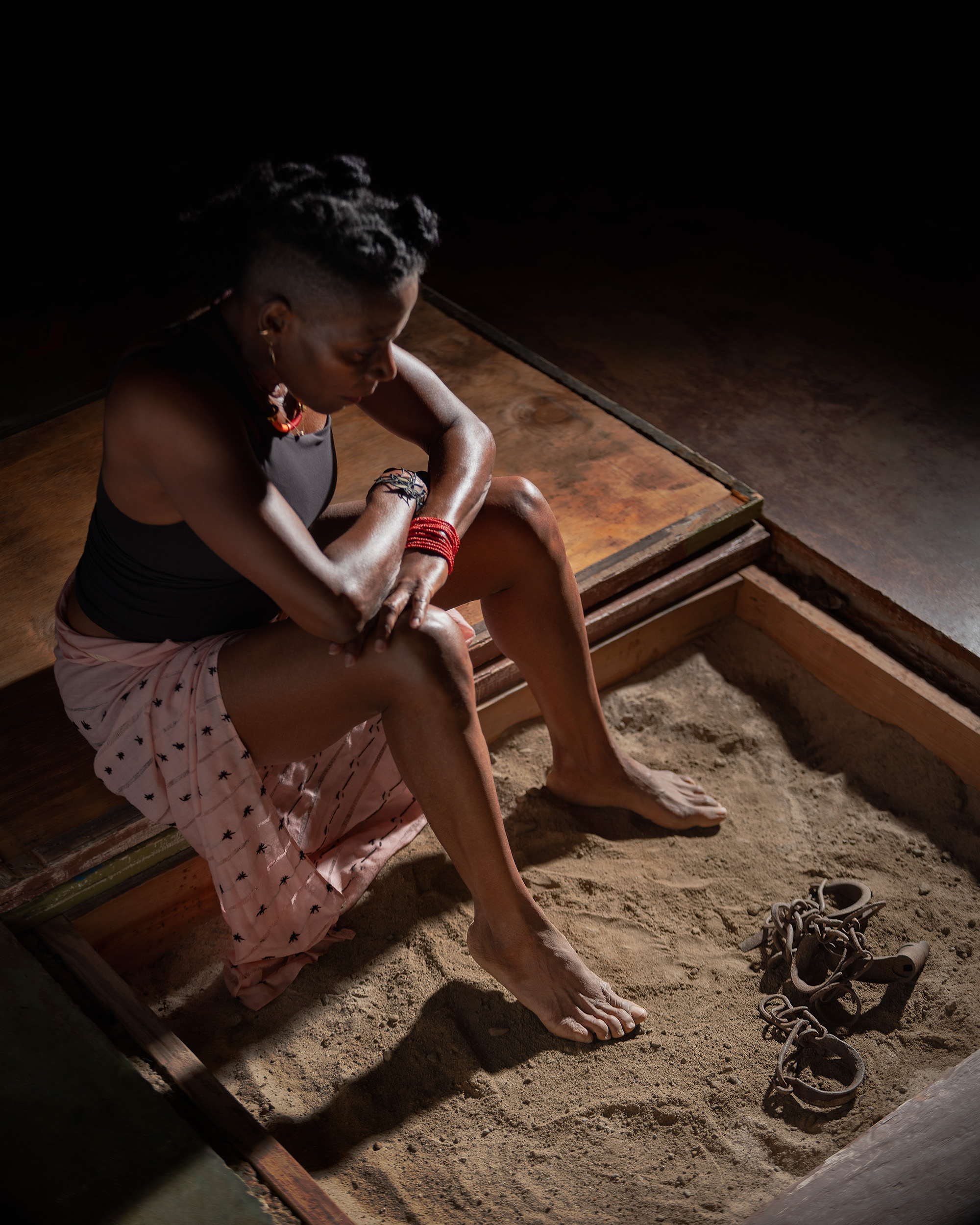
The dancers’ performance was captured as foley sound for the film’s score at Richmond’s In Your Ear Studios. Informed by historical research and produced through a process of recording choreographed movements directed by Sherrod, the team’s movements employed special costuming and props to produce sounds like the heaves of bated breath, the creaking of a ship’s planks and the rattling of chains.
The critical reception to Elegy was glowing, with the exhibition earning warm reviews in The New York Times and The Washington Post, among other outlets.
But Cassel Oliver said the most powerful feedback came from museum visitors, who were encouraged at the end of the experience to leave anonymous responses to questions posed on a reflection wall.
“You have these very poetic, very thoughtful responses that viewers were willing to share,” she said.
Among the hundreds of notecard reflections that Cassel Oliver keeps in her office is one that replies to the question, “How can landscape tell a story or hold a memory?”
“You can see and feel what took place – love, pain and everything in between,” the viewer wrote.
“Their critical responses, to me, spoke volumes about the impact of this exhibition,” Cassel Oliver said.
As Elegy was concluding its run, the city of Richmond announced plans for a major memorial as an expansion to the Trail of the Enslaved. The 10-acre Shockoe Project, designed with input from community groups, would feature a National Slavery Museum and memorials to the unnamed Africans buried in the area.
There is a future, too, for Elegy. Based on its success, Cassel Oliver has fielded great interest from other museums about presenting the exhibition, and she is in negotiations for its next host.
For Sherrod, collaborating on one element of Elegy was transformative, not only for her personally but the way she views and teaches dance.
“This process and this project has changed so much about me,” she said of 350,000. “It has affirmed what I had already been teaching, which is for dancers and movers to allow the breath to carry the movement.
It allows us to stay within a durational practice longer. That trail and the whole project is about duration:
How can I stay in the duration of agony and live?”
Elegy also changed the way she viewed the trail, which she often visits. During their creative process, Sherrod and her team named their project the 400+ Continuum.
“It means 400 years—and it continues,” she said of the name, which builds on the 2019 quadricentennial of enslaved Africans arriving at Jamestown. “I was giving them intentionality around whomever, whatever ancestral force or peoples walked on that trail all those years … those 350,000-plus. They were walking into our future. So what they brought—their minds, their heads and their understanding of art—became jazz, tap dance, hip-hop, gospel. Whatever they brought became those things that we know now as our cultural art forms.”
Sherrod said the process also taught her the importance of leaning into collective and collaborative work on artistic projects—and to embrace the uncomfortable and challenging.
“I learned about expansive thinking around an artistic project,” she said. “Don’t go for the easy. Go for the damn near impossible and see what happens.” n
Read More
in the Fall 2024 issue of Studio Magazine
